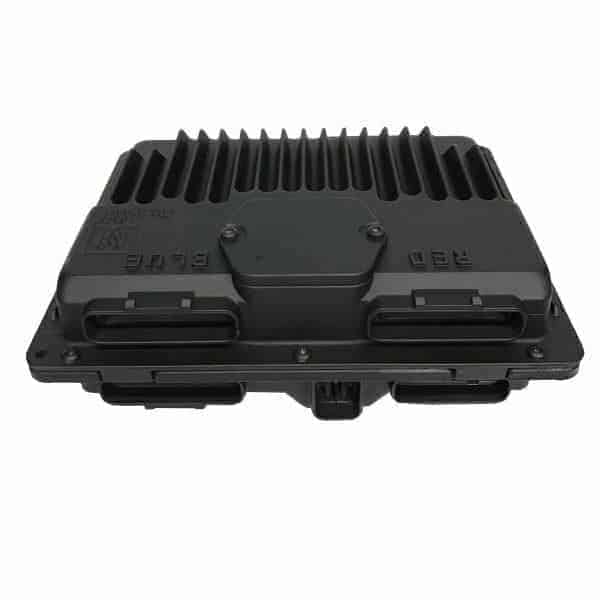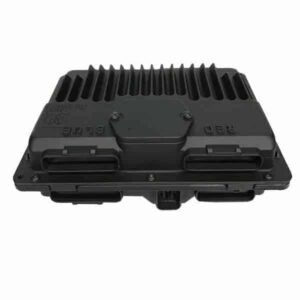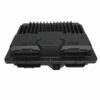Restore Your Workhorse: The Reliable Fix for Your GM Truck’s Brain
As a technician with over two decades of experience under the hood, I’ve seen countless GMT400 and Express/Savana vans come into the shop with baffling issues. Rough idle, no-start conditions, erratic shifting—symptoms that can send you chasing ghosts for days. More often than not, the culprit is a failing Powertrain Control Module (PCM). This isn’t just a part; it’s the central command center for your engine and transmission. When it fails, your dependable truck or van can become a driveway ornament. This is the exact solution you need to bring it back to life.
This isn’t just a used part pulled from a yard. This is a fully tested, VIN-programmed PCM, ready for your specific 1998-1999 Chevrolet 3500 Pickup or other compatible GM vehicle. We take a quality, salvaged OEM computer and flash it with the latest GM-certified software using your vehicle’s VIN. This critical step ensures all communication between the engine, transmission, and other modules is correct from the moment you install it, eliminating the need for an expensive trip to the dealership for programming.
A Technician’s Notebook: The Intermittent No-Start
A customer brought in his ’99 Suburban 2500. It would start and run perfectly for weeks, then suddenly refuse to start for a day. No rhyme or reason. He’d replaced the battery, starter, and fuel pump. When we got it, of course, it started every time. After checking grounds and wiring, we hooked up a scope to the PCM connectors. We found that the 5-volt reference signal would occasionally drop out during cranking, but only when the engine bay was hot. The PCM’s internal voltage regulator was failing under heat soak. Swapping in a pre-programmed PCM like this one solved the problem instantly. It’s a classic failure mode for these units, and this part is the direct, reliable fix.
Is Your Truck’s Brain Failing? Common PCM Symptoms
A failing PCM can manifest in numerous ways. If you’re experiencing any of the following, a faulty module is a likely cause. A proper diagnosis is always recommended, but these are tell-tale signs I’ve seen hundreds of times.
- ✔ Check Engine Light is on with communication error codes like P0601, P0605, or P0606.
- ✔ Vehicle won’t start, or starts intermittently.
- ✔ Harsh or erratic automatic transmission shifting.
- ✔ A significant, unexplained drop in fuel economy.
- ✔ Engine stalling, stuttering, or misfiring for no apparent reason.
- ✔ Failure to communicate with a diagnostic scan tool.
A Straightforward Guide to Installation
Installing your programmed 1998-1999 Chevrolet 3500 PCM is a job most DIYers can handle with basic tools. The key is taking your time and following the proper procedure.
- Safety First: Always disconnect the negative terminal from your vehicle’s battery before beginning any electrical work.
- Locate the PCM: On most of these trucks and vans, the PCM is located in the engine compartment, typically on the driver’s side inner fender or near the battery.
- Disconnect Connectors: Carefully unlatch and remove all wiring harness connectors from the old PCM. Inspect the terminals for any corrosion or damage. Clean them if necessary.
- Remove the Old Module: Unbolt the old PCM from its mounting bracket. It’s usually held in by a few 10mm or 7mm bolts.
- Install the New Module: Mount your new, pre-programmed PCM onto the bracket and securely fasten it.
- Reconnect Everything: Firmly plug all wiring harness connectors into the new PCM. Ensure they click and lock into place. Reconnect the negative battery terminal.
- Perform Security/Crank Relearn: For many of these vehicles, a security relearn procedure (often called CASE or Crankshaft Variation Relearn) is required after installation. This can typically be done without special tools by cycling the key, or with a capable scan tool. This procedure syncs the new PCM with your vehicle’s anti-theft and crankshaft position sensor systems.
Verified Vehicle Compatibility
This module, identified by service number 09355699, is a direct replacement for a wide range of GM vehicles. It is compatible with part numbers 16266645, 9355699, 16250279, 16258815, 09366810, and 9366810. Please verify your vehicle is on this list:
- 1998-1999 Chevrolet & GMC C/K 1500, 2500, 3500 Pickups (Gasoline)
- 1998-1999 Chevrolet Suburban & GMC Yukon/Yukon XL (Gasoline)
- 1998-1999 Chevrolet Tahoe & Cadillac Escalade
- 1998-1999 Chevrolet Express & GMC Savana 1500, 2500, 3500 Vans (Gasoline)
- 1998 Chevrolet Astro & GMC Safari
- 1998 Chevrolet S10, GMC Sonoma, Chevrolet Blazer, GMC Jimmy, Oldsmobile Bravada, Isuzu Hombre (4.3L V6)
- 1998 Oldsmobile Bravada & GMC Envoy
This pre-programmed 1998-1999 Chevrolet 3500 PCM is the most efficient way to get your truck running right again. By providing your VIN, you get a part that’s ready to go, saving you time, money, and diagnostic headaches. Order today and get your vehicle back on the road where it belongs.
Frequently Asked Questions
Why do you need my VIN?
Your Vehicle Identification Number (VIN) is essential. It allows us to load the exact, correct GM-certified software for your truck’s specific engine, transmission, and emissions equipment. This ensures perfect compatibility and function right out of the box.
Is this a new part?
No, this is a high-quality, tested used OEM part sourced from a salvaged vehicle. We find this offers the best balance of reliability and value, providing an original factory part without the high dealership cost.
Will I need to do a CASE or security relearn?
Yes, in most cases. After installation, a security relearn procedure is necessary to sync the PCM with your vehicle’s anti-theft system. This can often be done by cycling the ignition key or may require a scan tool for a Crankshaft Variation Relearn. Instructions are widely available online for your specific model.
What if my part number isn’t listed?
The listed part numbers (09355699, 16250279, etc.) cover a wide range of applications. If your number is different, please contact us with your VIN and original part number. We can verify compatibility to ensure you get the correct module.
Is this difficult to install myself?
For someone with basic mechanical skills and tools, this is a very manageable job. The most important steps are disconnecting the battery and carefully handling the wiring connectors. The post-installation relearn procedure is the final step to full functionality.



